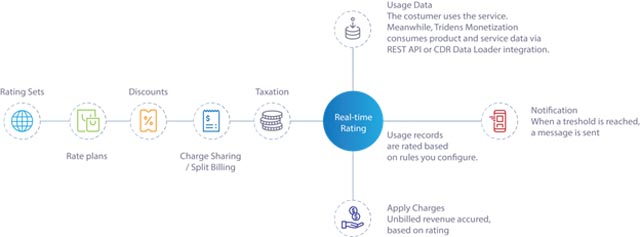Coming up with a pricing model for your business is one of the toughest things to do. A lot of companies these days are opting for usage-based billing as opposed to a subscription one. The main reason being that it offers a more fair and transparent pricing model for the customers as well as the business.

Many entrepreneurs are still unaware of what usage-based billing software is and how it works. If you are one of them too, then here is an article that can be an interesting read. It will give you an overall idea of what usage-based billing is and the different revenue models that you can find under this invoicing method.
What is a usage-based revenue model?
When you charge your customers a fixed price for your product or service after a particular interval that is usually known as subscription billing. While on the other hand, when you track your customers’ usage of a product or service during a fixed interval that falls under usage-based billing.
The most common usage-based billing examples that you can find in your day to day life can either be your telephone bills or other utility bills like gas or electric. The organization that bills you for these products or services, utilizes usage-based billing software to track your current usage and then processes the same information in the form of an invoice.
List of common usage-based revenue model
- Flat Tiered Pricing
- Flat Subscription + Overage
- Flat Subscription + Usage
- Linear Pricing
What is tiered usage-based billing saas?
The usage-based revenue model also has a tiered based billing system. The entire aim of creating different tiers in your pricing model is to make it more granular and easy to understand for customers. When you have a pricing model that is not overloaded with options and has a distinct outline, then your customers are able to understand what exactly they are paying for.
A common example of a tier revenue model in a usage-based billing software can be seen in the form of packages. For instance like bronze, silver, and gold. Here the bronze package has the lowest price and product threshold. This increases in the next two subsequent tiers.
The revenue model tier can be created based on different aspects. While most businesses opt for the number of units of a product or service. There are some that also take utilization period into consideration. Either way, it allows your customers to choose the most appropriate plan as per their requirements.
Advantages of tiered usage-based billing
Locking Features
When a business offers extensive support and facilities to a customer, they end up spending more then what they bring in. By considering usage-based billing and its tier system, you will be able to put these additional services in a particular package. You can then increase the price of these packages which will allow you to make a profit on customers who cost your business more.
Capturing customers
Customers these days have high demands. That is why usage-based billing software is also designed in the same way. By offering customers a number of different packages or tiers, you will be able to keep them linked to your business. Moreover, when you have a number of different alternatives available, it becomes much more easy for a business to bring in new customers.
Upselling
Upselling customers requires a lot of attention and persuasion. Creating pricing tiers with the help of your usage-based billing software will give you a chance to do the same. Usually, there are times when a customer is between different pricing plans. Therefore, when you identify a customer that is on edge of a package or tier, you will be able to upsell them easily.
Usable with other pricing models
The last advantage of using a tiered usage-based billing model is that it can be combined with other pricing models as well. As you see in the list given above, tiered revenue models can be easily linked with other options like subscription, overage, and linear. It makes it very easy for businesses to create their pricing models based on their different internal and external factors.
If you are intrigued by how usage-based billing software works and the features it offers, then try implementing it for your business as well.


 Hot Features
Hot Features














